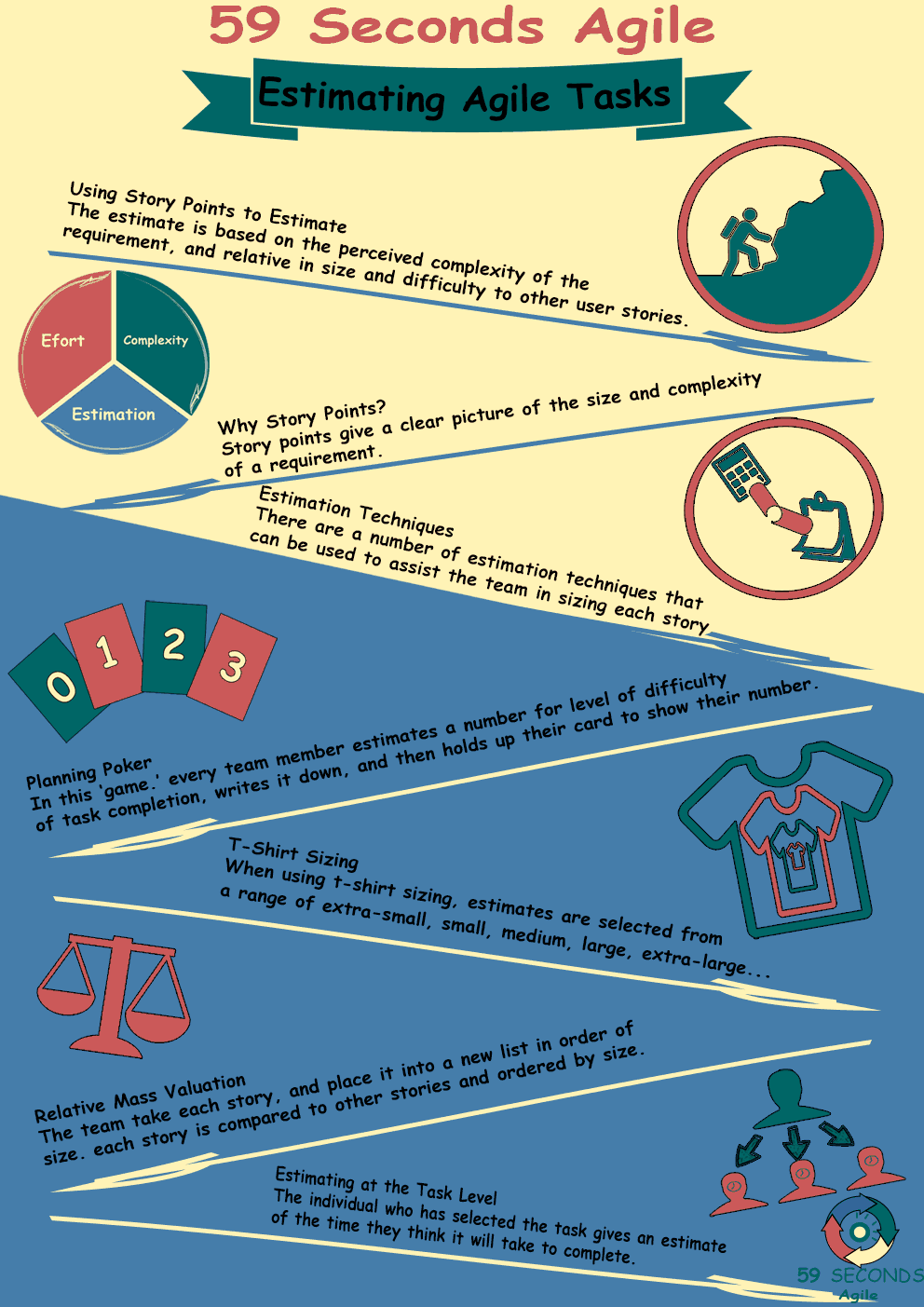Estimating Techniques
A 59 Seconds Agile Training Video
Continue to Part 5 Below
Estimating Techniques in Scrum
A 59 Seconds Agile Article
This article provides an ‘Introduction into Estimating Techniques’ and looks to discuss the different approaches to estimation and the benefits of each approach.
Story Points
The Story Points approach is useful for teams that have previously worked together and are highly familiar with SCRUM. Traditionally, estimations take the form of days, weeks, or months.
In contrast, story points transform the unit of estimation into a scale of difficulty or effort needed to complete a task or element to be developed. After the product owner has created the user stories and discussed them with the development team, the development team each assign a relative value to the story. This gives the estimated complexity of each user story.
This is useful because dividing the total number of story points by the team’s velocity, gives the number of sprints a project will require. It is then possible to ‘calculate’ the length of projects, by taking the length of a sprint and multiplying it with the estimated number of sprints.
When estimating user stories, or scales of effort for task completion, teams should keep in mind that the estimate is defined as relative and not written in stone.
Estimations will naturally be different for each team, and story points therefore eliminate issues of tension or politics, such as using velocity as a weapon.
Continue Reading —> Next
Estimating Techniques
A 59 Seconds Agile Video Animation
Continue Reading —> Next
User Stories Applied
A 59 Seconds Agile Book Review
User Stories Applied by Mike Cohn is one of our favourite books on Agile User Stories. The book starts with an overview into user stories, and details what a user story is and the different aspects of them. He then discusses how to go about writing a user story, and provides details of the INVEST criteria that can be used to determine if the story is meeting all of its objectives. Next Mike gives an in depth discussion of who user stories are written for and where to begin when gathering the details for them. The book then discusses acceptance testing user stories, including how to go about specifying these criteria and the responsibilities of the development team and customers during this process.
Continue Reading —> Next
Estimating Techniques
A 59 Seconds Agile Infographic

Continue Reading —> Next
Agile Scrum Master Training Course
Our Favourite Agile Books
We found these books great for finding out more information on Agile Scrum:
Continue Reading —> Next


